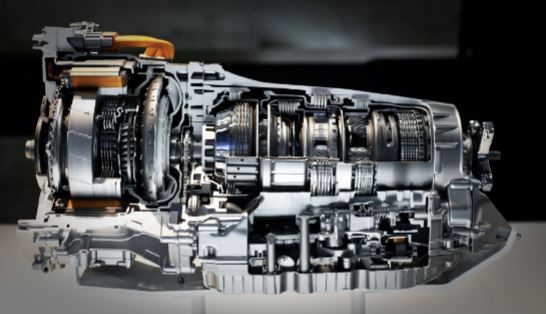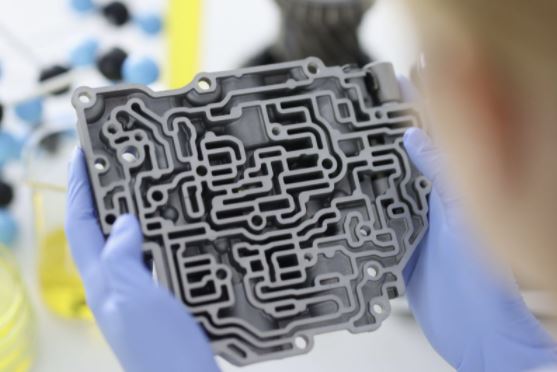The transmission is one of the most important parts of your vehicle next to the engine and drivetrain. It is responsible for converting your engine’s unusable power to useable power by utilizing the power of gear ratios to provide more or less power depending on the driving conditions you are dealing with. Your transmission helps you go uphill, downhill, accelerate, decelerate, and much more. When there are issues with the transmission, your car can have all sorts of problems and odd symptoms. Knowing if the issue is a solenoid valve or something more serious is crucial, and we want to help you know the difference.
What is a Transmission Solenoid, and What do They Do?
A transmission solenoid is a part of an automatic transmission that helps to control the flow of transmission fluid through the transmission. A solenoid is an electro-hydraulic valve that opens and closes according to the electrical signals that are sent from your engine and transmission control unit. This is managed by the speed of the vehicle and the information that is sent to the transmission control unit based on how fast or how slow you are going.
These controls are crucial to the proper function of your automatic transmission and the health of your car and the engine. Transmission solenoids are necessary, and they are a less expensive part of your transmission than other parts. If you do suspect that there is something wrong with your solenoids, you can always check transmission codes, and you can find the 4l80e transmission trouble code for a solenoid that is malfunctioning can be found on Reman-Transmission.com.
Solenoid valves are responsible for helping your automatic transmission know how to function properly and know when to help the transmission shift up and down according to how you are driving. They are entirely necessary and are needed to make sure that your transmission is going to be able to shift as needed and work well and be safe for you as well. Though solenoid valves are small, they are a very important part of your engine and your transmission, and when they do go out, trouble arises.
How to Diagnose Transmission Solenoid Issues
There are a few different signs that your solenoids might be malfunctioning, and taking the time to learn about these can help you determine if this is the issue or if there is something more serious at play. One early sign is that your transmission may be experiencing delayed shifting. An automatic transmission is going to be able to shift based on how you are driving and based on the opening and closing of the solenoid valves.
When the solenoids are damaged or going bad, it may make your transmission delay in shifting. If you are going up a hill, for instance, you might notice that your car does not shift up or down a gear as quickly as it should. Another issue you might run into is that you are unable to downshift the transmission. This might also lead to the engine still revving even though you are applying the brakes. This can be dangerous, can cause a great deal of trouble, and can make it unsafe to drive your car at all.
There may also be trouble with your car getting stuck in neutral. If your car gets stuck in neutral, you may end up with a car that you cannot park or drive, and that is dangerous as well. The last issue you want to look for is that your shifting may become erratic and rough. Your transmission is responsible for making your car safe to drive, and when the transmission goes out or when parts start to wear out, it can cause all sorts of trouble.
Though you can notice these issues on your own, unless you are a mechanic, you cannot diagnose it yourself, and you do need to take your vehicle to the mechanic to have it properly diagnosed and to get the proper repairs.
The solenoid valves are necessary to help make sure that your transmission is going to be able to control your engine and help you drive the way that you need to. With a solenoid that is going bad, your transmission is not going to be getting the information that it needs to run properly, and the valves are not going to be able to open and close properly so that the transmission is not going to get the proper fluid.
What to Do if Your Solenoid Valves are Bad?
If you suspect that your solenoid valves are bad or that they are going bad, you need to take your car to a mechanic as soon as possible. You cannot drive a vehicle with bad solenoid valves as the transmission is not going to be able to function properly and is not going to be safe. Your mechanic can help you check and see if there is an error code and find out if your valves need to be changed out or if there is a more serious issue.
Solenoid valve replacement is far easier and far cheaper than having to replace or entirely rebuild your transmission. If you suspect that there is a more serious issue, your mechanic is also going to be able to help you determine what can be done and what steps need to be taken to make sure that your transmission is in good working order and safe for you to drive.
Solenoid valves tend to take time to go out fully; this means that you are going to get warning signs that something is wrong before they do go completely out. You will get warning signs, and you will be able to take your vehicle to the mechanic before they do out entirely and before very serious action is needed. Solenoid replacement is serious, but it is not so serious that you are going to need a full rebuild, and with the help of a great mechanic, you can get your solenoid valves replaced and get back on the road in no time.






Edel, that was a fascinating read! When solenoid valves fail, your vehicle may exhibit symptoms. In my opinion, whenever one or more solenoid valves fail, you may lose usage of one or more gears, become stuck in one gear, or be unable to switch into any other gear at all. In addition, your check engine light begins to flash. It is best to take your vehicle to an experienced mechanic under these circumstances.